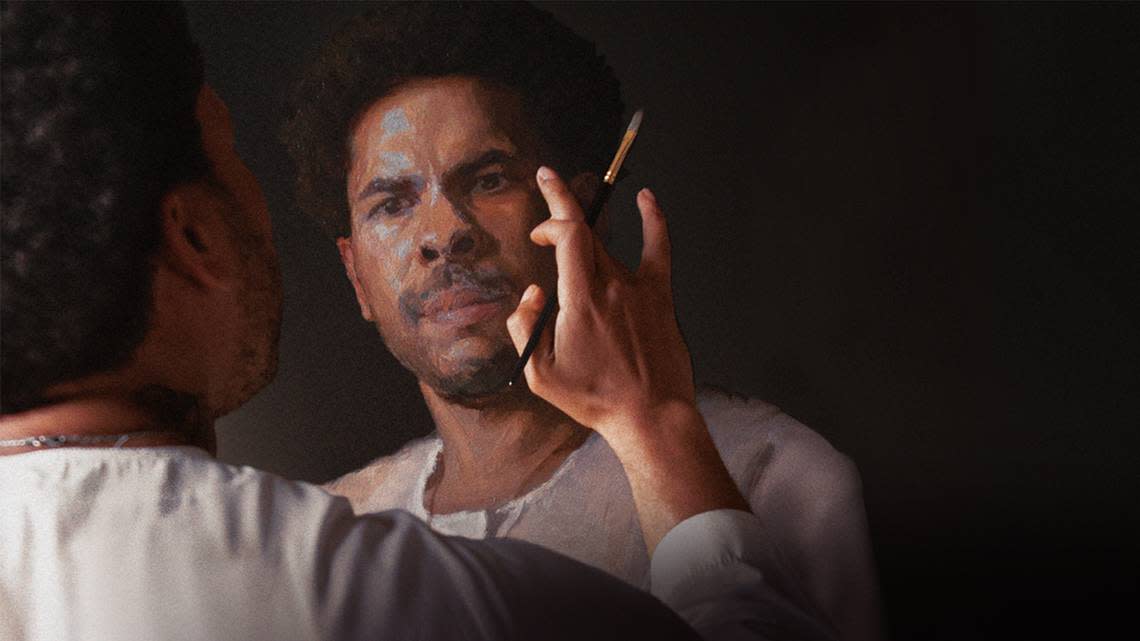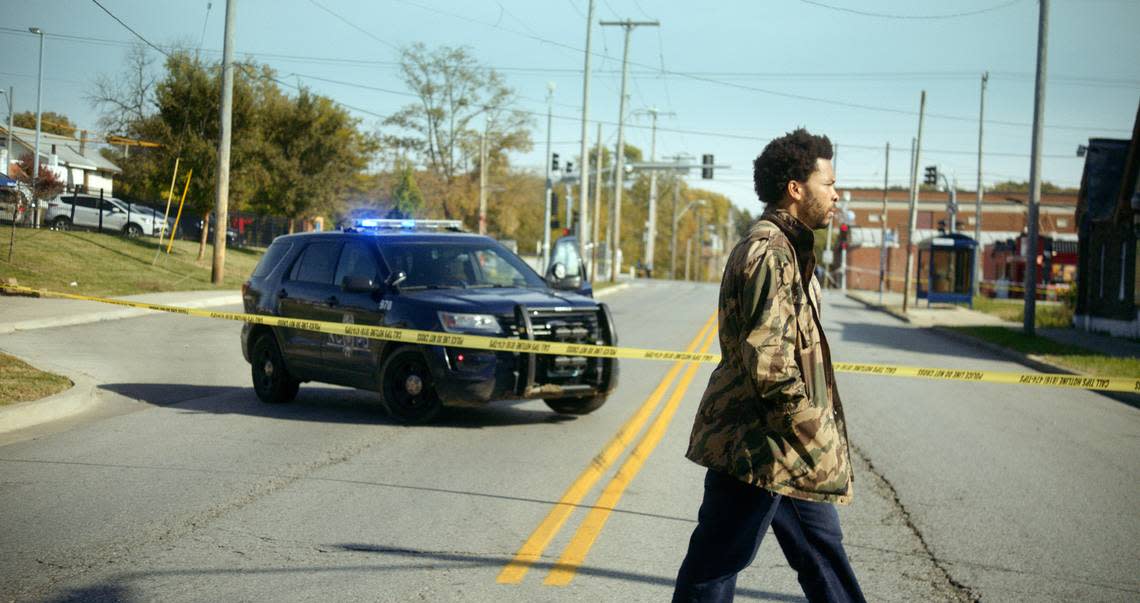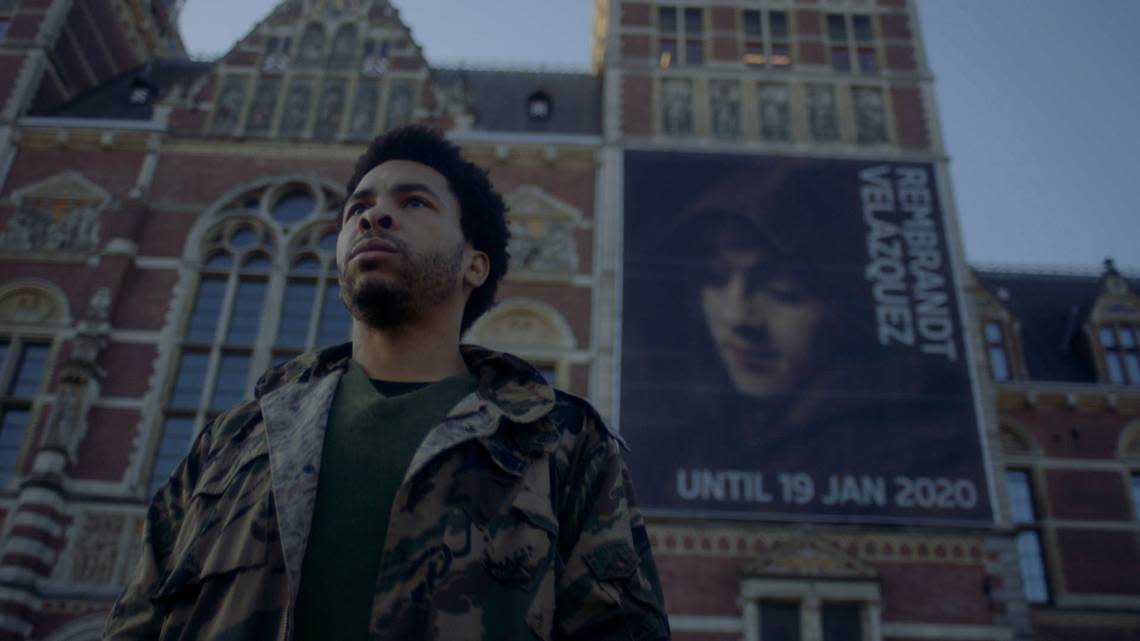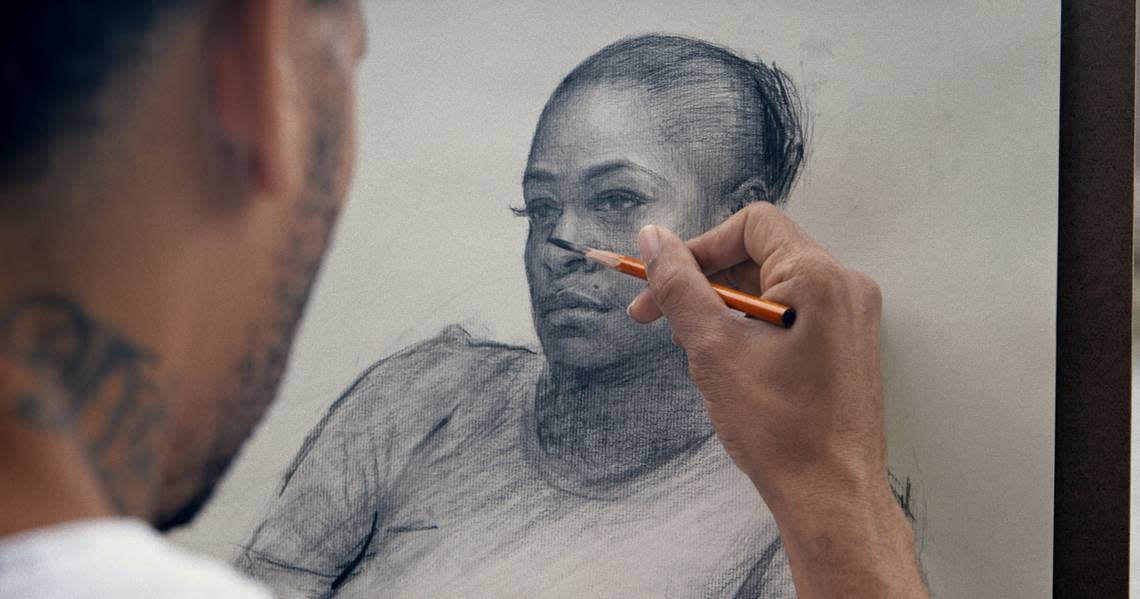Acclaimed HBO film paints the life of a Kansas City native — from prison to artist
The film begins with Kansas City native George Anthony Morton creating paintings in the style of classic artists like Rembrandt.
And then it quickly segues to a scene showing him bonding his mother out of the Johnson County jail in Olathe.
Those opposing forces are the running theme in the new 90-minute documentary “Master of Light” — that push to escape a tumultuous Kansas City upbringing and the pull that threatens to draw Morton back into chaos.
The award-winning film, premiering at 7:30 p.m. Nov. 16 on HBO, reveals Morton’s artistry and his personal story in equal measure.

In the film, he says one of his earliest memories is of “my grandmother smoking dope.”
“If there was a neighborhood drug house, that is where we lived,” says Morton, who is now based in Atlanta but often returns to Kansas City. “We were that family, that house. But I would always have these teachers that would pull me aside and say, ‘You’ve got something here,’ this potential that was recognized and encouraged.”
In a recent phone interview, Morton says he grew up in many locations, mostly on Kansas City’s East Side.
“When you have a single mom, it’s just all over the place,” Morton says.
He started drawing and painting as a child and recalls his efforts were first recognized in sixth grade at the now-closed C.R. Anderson Alternative School, a “school they kick you to when you get in trouble in public school.”
He remembers his first art teacher, Mr. Hosel, who celebrated Morton’s talent.
“From there I wound up in juvenile, getting my GED and where I met my math teacher who told me when I got out she was going to take me to the Nelson-Atkins (Museum of Art),” he says of Sharon Rouvierre, whom he’s unsuccessfully tried to track down in recent years. “She took me there and showed me the Rembrandt portrait of a man that’s featured in the film. She introduced me to French impressionism.”
But then at 19, he was arrested and sentenced to almost a decade in prison for possession of 2 ounces of crack cocaine.
“Part of my justification in my mind when I was committing all those crimes, I’d be able to tell the judge, ‘My momma said it was OK for me to do this, my grandma showed me,’” Morton, 39, says in the film. “Why would I care about the police if my grandma and my mamma said it’s OK?”

In an interview, Morton says he holds only himself responsible for going to prison. And he doesn’t mourn losing all of his 20s to incarceration.
“I honestly can say that I regret not a single day of my 135-month sentence,” he says. “I (would) even find myself halfway through it, seeing people get out and come back before I completed my sentence, and think to myself, ‘I’m not ready yet.’ I just want to continue to develop and refine myself because I had things that I was working on and myself. Going to prison for me was an escape from what seemed like an even bigger prison in the streets of Kansas City, a prison of hopelessness. … Prison felt like an opportunity that was brilliantly disguised as a setback.”
First-time filmmaker Rosa Ruth Boesten met Morton through a friend in New York when Morton was studying at Florence Academy of Art after his prison sentence. They collaborated on “Master of Light.”
“What makes his story so powerful is the juxtapositions in his life and using art for healing, which in his case is very complex,” she says. “How far can healing really go if you’re battling an entire system of centuries of racism and neglect that has deeply impacted his family’s intergenerational cycle and position in this society? The juxtapositions of light and dark and of hope and despair made this film so important and his art so relevant.”
While many titles were considered for the film, “Master of Light” was a potential name from the start.

“Rembrandt is often called ‘master of light’ or ‘master of light and shadow.’ This reference speaks to his excellence in working with dark and light in his paintings to convey certain emotions and portray someone in a way you can almost feel someone’s soul,” Boesten says. “But to us, ‘Master of Light’ also speaks to personal transformation and to confronting our own shadow parts.”
The film won the grand jury award for documentary feature at the SXSW Film Festival in March, and has drawn rave reviews: a “superbly intimate portrait” said Variety; “harrowing and spellbinding,” said IndieWire.
“Master of Light” shows Morton striving to paint subjects beyond the 17th century Dutch masters his work is most often compared to. In the film he’s shown sketching his sister and expresses a goal of creating an artistic representation of his mother, who has moved to Atlanta.
“As of late, most of my studies have been in African art and other cultures outside of the idea of the Western high canon,” Morton says.
Even before linking up with Boesten, Morton had started “the filmmaking journey” during art school, when professors suggested studying certain films that might make his painting better.
“I guess, I really got the memo,” Morton says. “I just started seeing all these cues that Rembrandt, if he were alive today, he probably would be making cinema. … He was into getting motion into his pictures, and I just began to put myself in his mindset. … They have used all the technology available to them today.”
Morton describes “Master of Light” as naturalistic cinema verite, which complements his style of painting.
Artist George Anthony Morton is at the Nelson-Atkins to study and paint in the tradition of the old masters. Watch him paint a copy of Rembrandt’s “Young Man in a Black Beret” in European Art gallery P17 through Oct. 27. pic.twitter.com/FlfgFTJs3M
— Nelson-Atkins Museum of Art (@nelson_atkins) October 17, 2019
The “Master of Light” filmmaking crew made about five trips to Kansas City to film over the last four years, including shooting at the Nelson-Atkins on multiple occasions. (In 2019, the museum invited the public to watch Morton paint a copy of Rembrandt’s “Young Man in a Black Beret” on display in the European Art gallery.)
“But we were mainly in Kansas City to capture how George would paint his mother, siblings, nephew and niece who live in Kansas City,” Boesten says. “I hope this film provides an example of how those first steps into breaking intergenerational cycles can be made. George teaches the next generation values about themselves that he and his siblings didn’t learn about when they were young.

“I also hope people will realize that this is just one story about a man with a lot of potential who didn’t have a chance to nurture that talent from a young age but somehow was able to find his inner light in a very dark place, federal prison, to turn things around.
“There is so much potential in every single person, and I want people to see how that talent and potential are going to waste when Black, brown and impoverished people are incarcerated at unjust and disproportional rates without a fair chance of reintegration.”
Freelance writer Rob Owen: RobOwenTV@gmail.com or on Facebook and Twitter as RobOwenTV.
